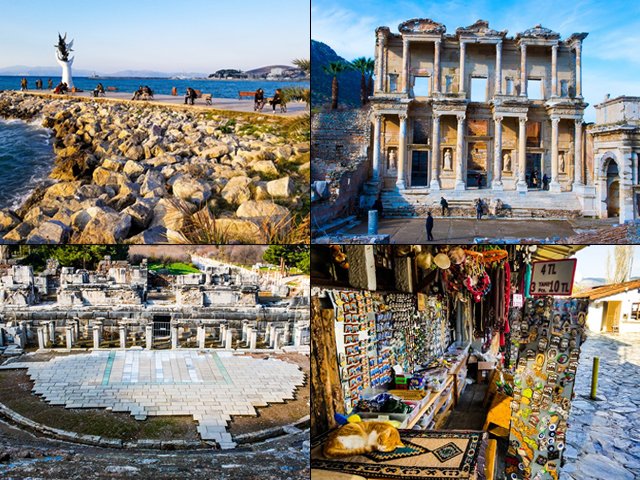
The Temple of Armetis is known as one of the seven wonders of the Ancient World.PHOTO: TAHA LUGHMANI
Time-travelling through history and losing myself in the ruins of Ephesus, Turkey
Entering this ancient city alone was sufficient to leave me, quite literally, in awe of the spectacle that lay ahead.
I wanted to end 2017 by surprising my parents with a visit, all the way from California, US to Mansehra, Pakistan. Travelling for 28 hours straight and showing up at my ancestral home in Mansehra, it took my father around three minutes to recognise me as his eldest son. Those three minutes started to get awkward, as I began to wonder if he had excommunicated me from the family tree. Instead, it turned out that he was just channelling his surprise by confusing me for my brother’s friend.
However, this little awkward reunion wasn’t the only part of my trip that I was eagerly anticipating, as I was equally excited for when I stopped in Ephesus, Turkey on my way back to California.
Though the flight from Islamabad to Istanbul was boring, as it usually is, the next segment of my itinerary – a one-hour flight from Istanbul to Izmir – provided the remarkable view of the Sea of Marmara and the Aegean Sea. As expected (due to prior experience), the people in Izmir confused me to be Turkish and talked their heart out to me in their local language. I could only reply with made-up sign language followed by the one-word answer, “English?”
The next part of my trip was from Gaziemer in Izmir to Kusadasi by shuttle. When I finally reached Kusadasi, a beautiful beach town overlooking the Aegean Sea, it was raining. The shuttle conductor asked me if I wanted to be dropped near a taxi stand or at a 200-metre walking distance away from the hotel. I wanted to be cheap, so I settled for walking in the rain as I dragged two big suitcases, which were stuffed with gifts from my mother. The walk was indeed long, wet and tiring.
 The shore at Kusadasi.
The shore at Kusadasi. Kusadasi at night.
Kusadasi at night.The next day, I woke up to a gorgeous view of the Aegean Sea from the balcony of my room. After having a hearty Turkish breakfast comprising of a variety of cheeses, salami, egg, vegetables and fruits, I was to meet my tour guide. I opted for an exclusive private tour to make the most of my two-day stay in Kusadasi, so I suppose I am not that cheap after all.
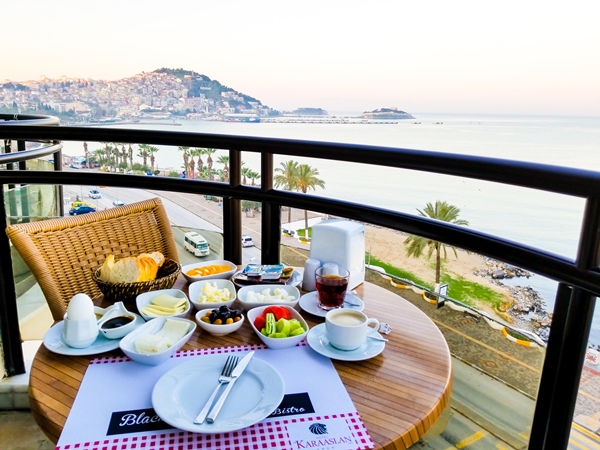 Breakfast overlooking the Aegean Sea.
Breakfast overlooking the Aegean Sea.I wanted to see the various historical and architecturally rich sites around Kusadasi. Amongst others, the ancient Greco-Roman town of Ephesus was at the top of my list. My guide’s English was much better than a common Turk’s, which made communication smoother.
We first visited the House of Virgin Mary, which is known as the site where the Virgin Mary supposedly spent the last few years of her life, before ascending to heaven. The house itself is very small, and is situated at a serene mountain top. It has now been converted to a small church, with Christians from across the world visiting this sacred site and paying their respects. The entire experience was quite spiritual and peaceful.
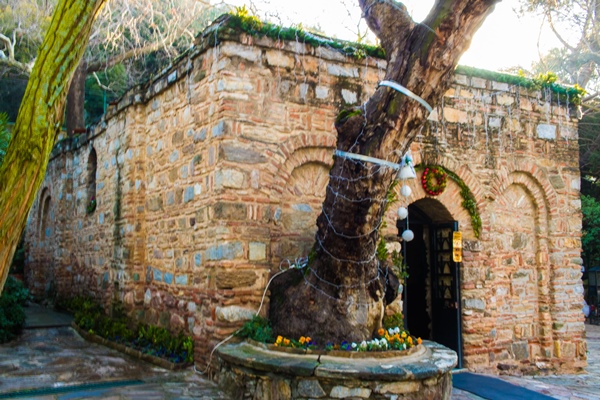 The house of Virgin Mary.
The house of Virgin Mary.Next to the house are three taps of holy water, known for bringing health, wealth and fertility, which is I why I ended up drinking a few sips from all three. There is also a wishing wall nearby, where people tie a handkerchief or a piece of paper to a wall so that their wishes may come true. This is a concept as familiar to Pakistan as it is to Turkey.
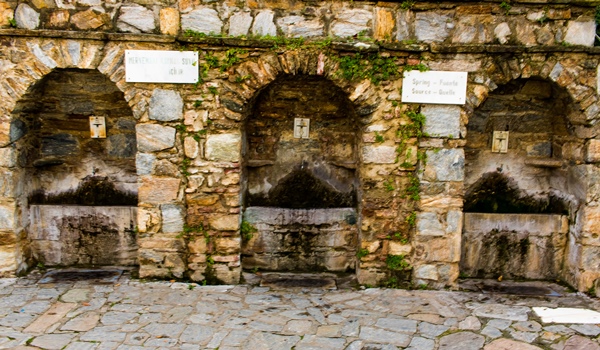 The three taps of holy water.
The three taps of holy water.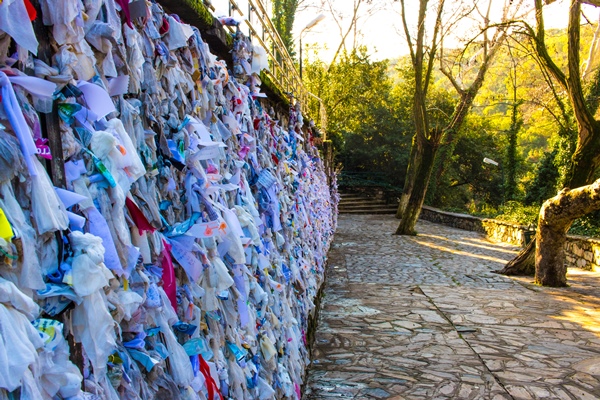 The wishing wall.
The wishing wall.Our next stop was the city of Ephesus. Entering this city alone was sufficient to leave me, quite literally, in awe of the spectacle that lay ahead. I saw ancient baths, shops, houses and agoras all around me. The city stretches for about a kilometre, and is dated around 10th century BC, having been destroyed many times throughout history. One of the reasons for its fame is the nearby temple of the Greek goddess, Artemis. The current site where the city stands was constructed by one of Alexander the Great’s generals, Lysimachus. After the Hellenistic period, the city ultimately came under the Roman Empire, and is thus called a Greco-Roman city, built by the Greeks and inhabited by the Romans.
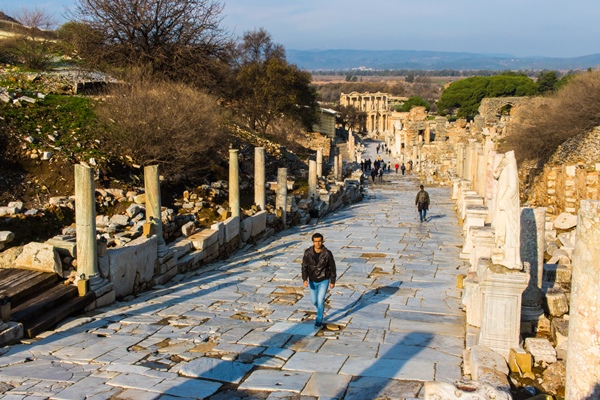 Walking on the ancient street of Curetes.
Walking on the ancient street of Curetes.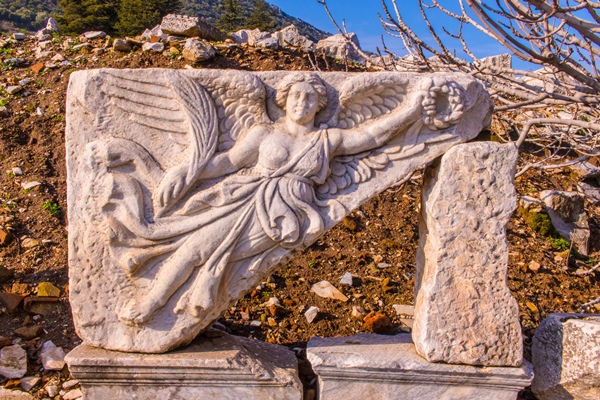 Nike, the goddess of victory.
Nike, the goddess of victory. One of the stones used in the marble columns.
One of the stones used in the marble columns. The two most famous sites inside the city are its library and the amphitheatre, which was constructed keeping acoustics into consideration. One does not need a microphone for their voice to be clearly heard by the audience. I went to the centre of the stage and tested it myself, and it felt like I could be heard even by someone sitting in the last row of the large hall. The theatre used to host plays and gladiator fights back in the day, but is now mostly used for the occasional classical music concert.
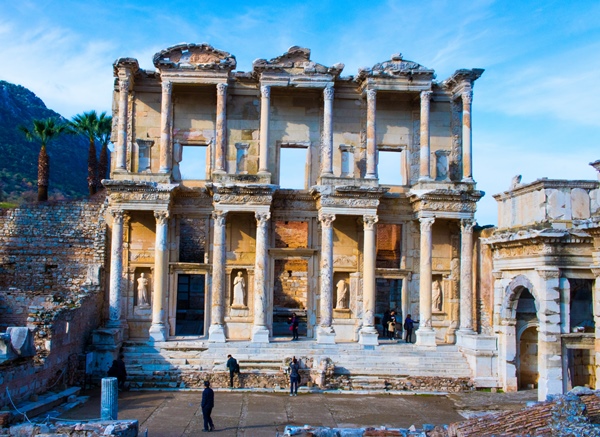 The ancient library of Celsus.
The ancient library of Celsus. The amphitheatre.
The amphitheatre. The main stage of the amphitheatre.
The main stage of the amphitheatre.In walking about this ancient city, I felt as if I had time-travelled to the Hellenistic and Roman periods. I could visualise the Aegean Sea right next to the amphitheatre, which is where it used to be before the surrounding area got silted, and the sea receded from its original place next to Harbour Street.
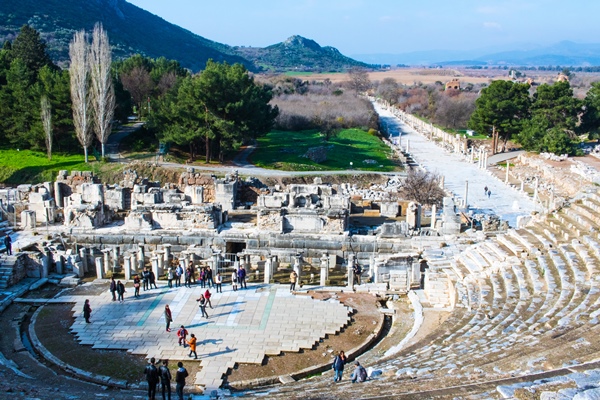 View of the Harbour Street from the amphitheatre.
View of the Harbour Street from the amphitheatre. Walking on Harbour Street.
Walking on Harbour Street.After taking a walk on Harbour Street through Ephesus, I was offered to make a detour to a nearby carpet factory, where I was greeted by the manager. He explained how the carpets were made, which was as fascinating as the carpets were beautiful. I didn’t take up his offer of buying anything, however.
 How carpets are made.
How carpets are made.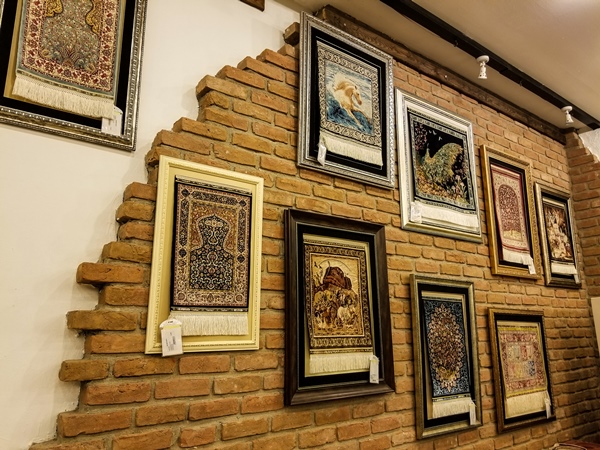 Samples of the carpets.
Samples of the carpets.Sirince village was the next part of our tour, a village known to be inhabited by the orthodox Greeks until the 20th century. Some say that the village was inhabited by freed slaves, who originally named it Cirkince (which means ugly), to deter people from moving there. The village was ultimately renamed Sirince (pleasant), which it truly is. It remained under the orthodox Greeks until an agreement took place between Turkey and Greece in the 1920s, through which both the Greeks and the Turks migrated reciprocally.
 An old Greek orthodox church.
An old Greek orthodox church.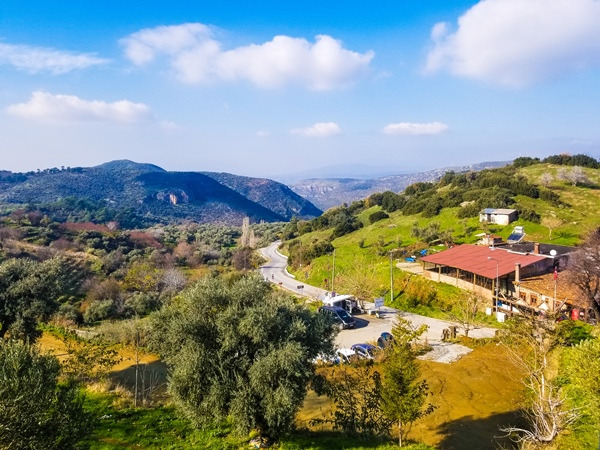 View of the city from the church.
View of the city from the church.I found that the locals in Sirince have converted their homes into restaurants and hotels in order to take advantage of the exponential popularity it has garnered recently. There were women running small shops and knitting assiduously at the same time, compelling me to buy a knitted toy cat for about Rs300.
 A house in Sirince turned into a restaurant.
A house in Sirince turned into a restaurant.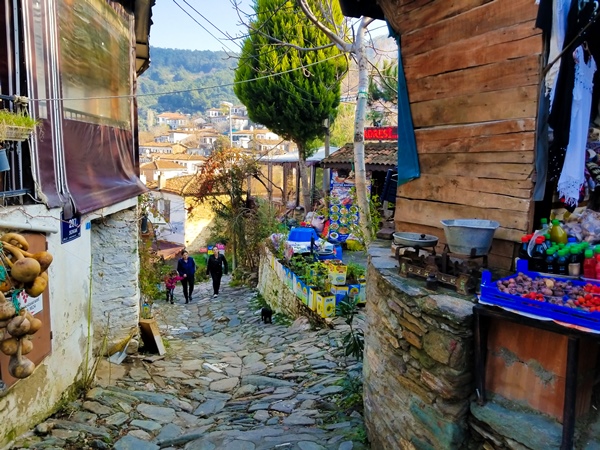 The streets in the village.
The streets in the village. Trinkets being sold on the street.
Trinkets being sold on the street.The next stop was the Basilica of St John. The saint, an evangelist, was one of the 12 apostles of Jesus. Jesus himself entrusted the Virgin Mary to him, and it is known that he travelled to Ephesus from Jerusalem. He created a Christian community here and preached throughout Anatolia (Asia minor). The Basilica was created by Justinian I, the Byzantine Emperor, with the church being made over St John’s tomb.
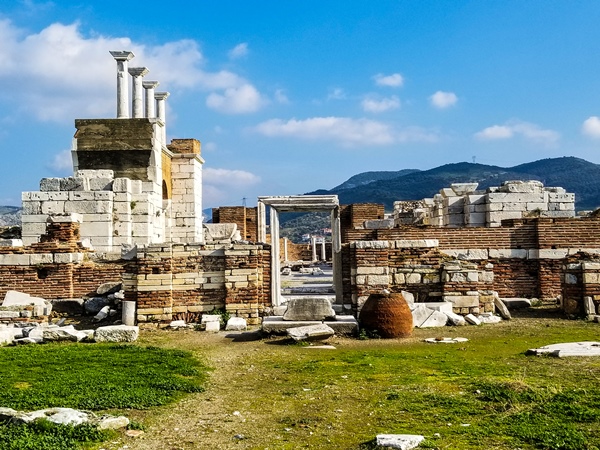 The basilica of St John.
The basilica of St John.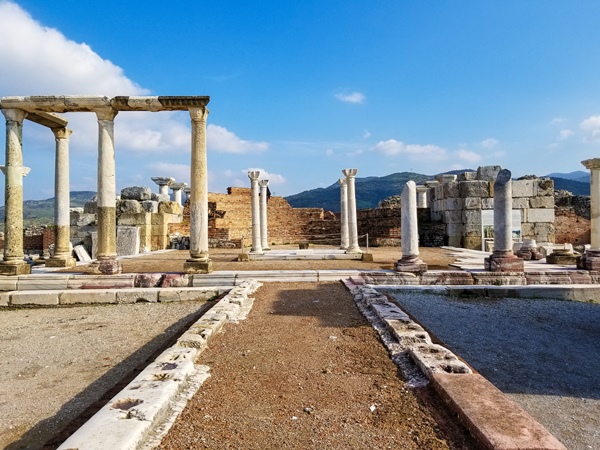 Remains of the basilica.
Remains of the basilica.Given the diversity and richness of Turkey’s history, you sometimes get to see Christianity, Islam and Paganism exist simultaneously. As I was standing on the Basilica, I could see two other great architectures in front of me; the Isabey Mosque and the Temple of Artemis. The temple represents Paganism, the mosque Islam, and the Basilica, of course, represents Christianity.
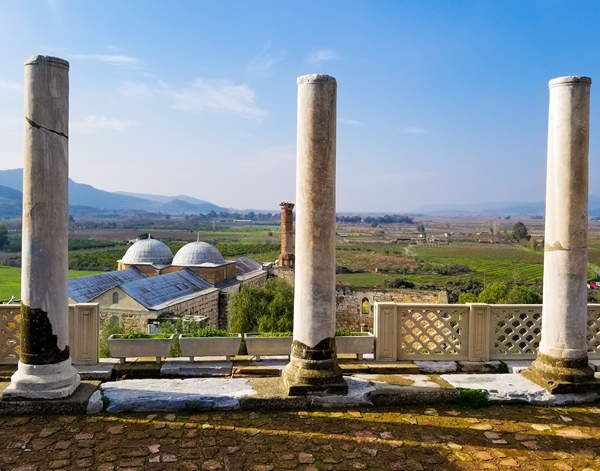 View of the Isabey Mosque through the pillars of the Basilica of St John.
View of the Isabey Mosque through the pillars of the Basilica of St John.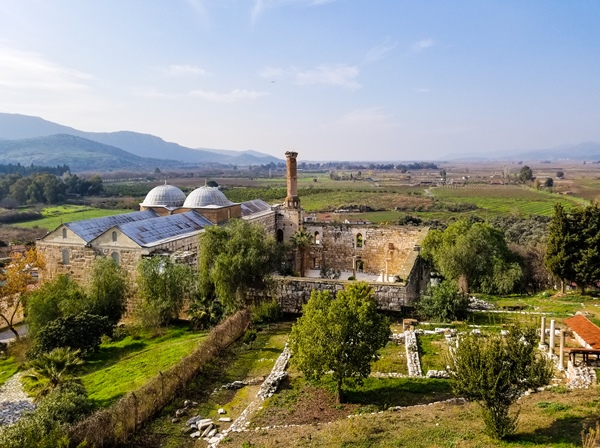 Isabey Mosque.
Isabey Mosque.My last stop was the Temple of Artemis, a pagan goddess. This monument has a special place in history, and thousands of years ago, one could see the grand temple and its dozens of marble columns from the Aegean Sea. All that is left of the temple now, however, is a singular column which alone is sufficient to remind us of its past glory. This temple is known as one of the seven wonders of the Ancient World, and out of these seven, only the pyramids in Egypt remain intact.
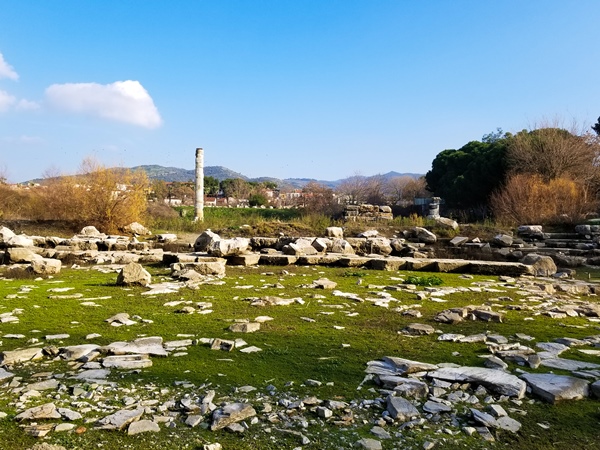 The temple of Artemis.
The temple of Artemis.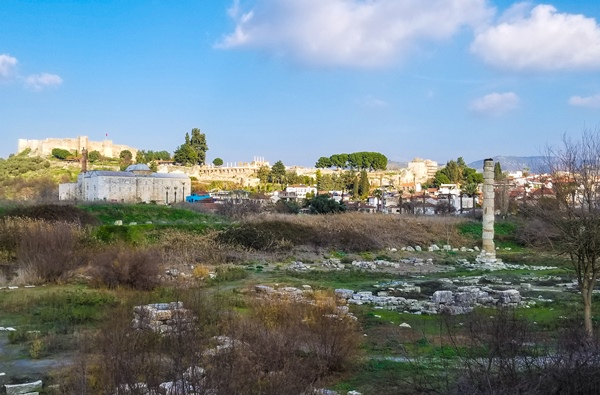 A Temple, a Mosque and a Basilica.
A Temple, a Mosque and a Basilica.As I stood at the temple, I could still see the Isabey Mosque and the Basilica of St John in the distance, and feel the importance these monuments help in our history. The human tendency of trying to relate to a higher being through time immemorial was right in front of me, and all I could do was let out a sigh of exhilaration. An irrational joy swept through my being, as I slowly started the walk back to my hotel.
For anyone looking to explore rich histories and time travel, Ephesus has much to offer, beyond your heart's fill.
All photos: Taha Lughmani

COMMENTS (4)
Comments are moderated and generally will be posted if they are on-topic and not abusive.
For more information, please see our Comments FAQ